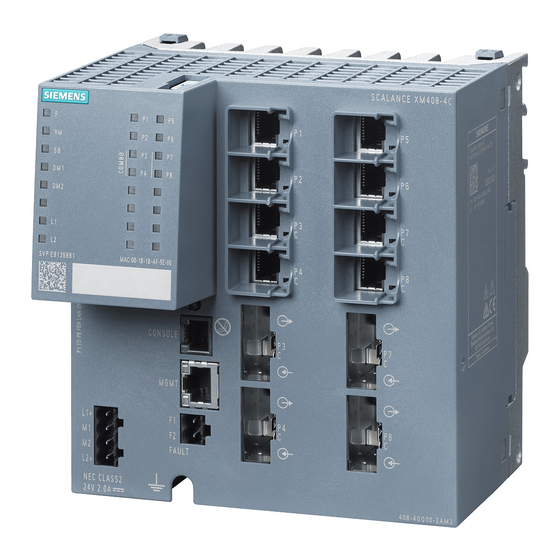
Siemens SCALANCE XM-400 Instructions Manual
Configuring the virtual router redundancy protocol
Hide thumbs
Also See for SCALANCE XM-400:
- Configuration manual (960 pages) ,
- Operating instructions manual (80 pages) ,
- Configuration manual (832 pages)













Need help?
Do you have a question about the SCALANCE XM-400 and is the answer not in the manual?
Questions and answers